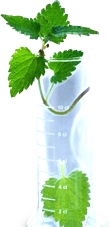



Author(s): Gangolli Divya, Rane Rajashree, Sarkar Saptashree, Suthar Ashish
Zinc is a metallic chemical element. Generally, Atomic Absorption Spectrometry (AAS) is used to measure the concentration of metallic elements. Although this technique is reliable and sensitive, it is expensive and thus not easily affordable by most pharmaceutical colleges and institutes. An alternative, reliable, easy and affordable method to estimate the amount of zinc in different types of herbal formulations is the proposed complexometric method. In this proposed EDTA method, Eriochrome Black – T is used as indicator (EBT). Zinc was estimated in two batches each of two different types of herbal formulations and their corresponding Active Pharmaceutical Ingredients (API). The first type was an oral dosage form (Aphrodisiac capsule) and it’s API (Yashad bhasma), and the second type was a topical dosage form (Anti-acne Gel) and it’s API (a zinc oxide dispersion Pushpanjan). The Aphrodisiac capsule is used for vigour and vitality and Anti-acne gel is used against black heads, pimples and red patches on the skin. The samples were first subjected to incineration to remove other impurities and subsequently estimated for the content of zinc by EDTA complexometric method. The content of zinc in the first batch of Aphrodisiac capsule was 18.00 mg/capsule and that in the second batch was 17.55 mg/capsule. The content of zinc in the corresponding API (Yashad bhasma) was 74.36 % w/w. Thus, the practical values were 102.85 % and 100.28 % of the theoretically expected values, in both batches respectively. Similarly, the content of zinc in first batch of anti-acne gel was 1.55 mg/g and that in the second batch was 1.58 mg/g. The content in corresponding API (Pushpanjan) was 60.50 % w/w. Thus, the practical values were 103.33 % and 105.33 % of the theoretically expected values in both batches respectively.